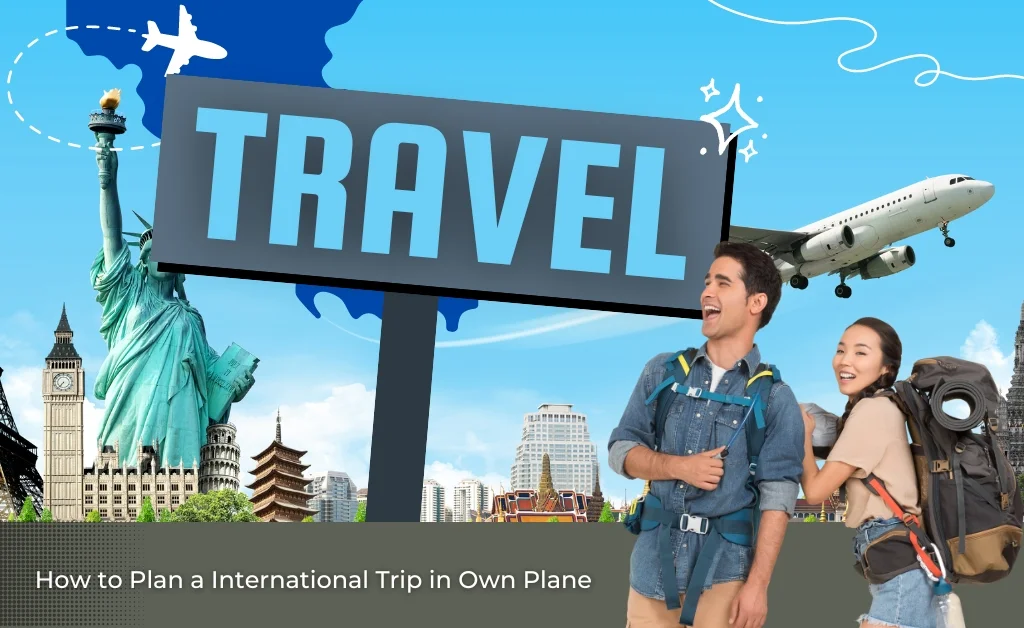Introduction: The Ultimate Freedom of Owning a Plane
Owning your own aircraft opens the door to unparalleled travel freedom. No longer bound by commercial airline schedules, you can embark on international adventures at your leisure. However, with this freedom comes the responsibility of thorough planning, ensuring safety, compliance with international regulations, and making the most of the experience. This guide will take you through every step of how to plan a international trip in own plane.
Choosing Your Destination
Your choice of destination will heavily influence the complexity of your flight planning. Some countries may have more lenient regulations, while others require additional paperwork. When selecting a destination, consider:
- Visa requirements
- Entry and exit procedures
- Airspace restrictions
- Airport infrastructure and services
Preparing Your Aircraft for an International Flight
International flights impose unique demands on your aircraft. Before takeoff, ensure your plane undergoes thorough inspections. Key points include:
- Aircraft maintenance and condition check
- Fuel capacity and consumption rates
- Communication equipment compliance with international standards
- Navigation systems to handle varying air traffic control protocols
Passport, Visas, and Entry Requirements
Even if you’re flying your own plane, you still need to meet the passport and visa requirements of your destination. Check well in advance:
- Whether a visa is required
- Duration of visa processing
- Entry permits or flight clearances for private aircraft
Flight Planning and Navigation
Flight planning is crucial for a smooth trip. Key considerations include:
- Mapping out your flight path and stops
- Estimating fuel requirements based on distance and weight
- Consulting aviation charts and navigation tools
- Prepping your flight management system with the correct waypoints and routes
Also read: https://lyrifii.com/fintechzoom-msft-stock/
Weather Considerations and Flight Conditions
Weather can be unpredictable, especially during long flights across different climate zones. Make sure to:
- Regularly check weather forecasts for your entire route
- Have a backup plan for adverse weather conditions
- Ensure your aircraft is equipped to handle various weather patterns, including turbulence and storms
International Flight Regulations and Permits
Flying across borders involves navigating complex airspace regulations. Ensure you are:
- Familiar with the international aviation rules governing the countries you’ll pass through
- Prepared to request permits or overflight permissions if required
- Ready to comply with each country’s safety protocols and regulations
Understanding Airspace and Air Traffic Control (ATC) Coordination
Coordination with ATC is critical for international flights. Make sure your flight complies with:
- Airspace classifications and restrictions
- ATC communication protocols for different regions
- Flight level and altitude assignments per international aviation standards
Fuel Stops and Refueling Logistics
Long international flights will likely require fuel stops. Research and plan for:
- Locations of reliable fuel stops en route
- Local fuel prices and availability
- Time needed for refueling and possible delays
Preparing Your Travel Insurance
Travel insurance is a must for international trips. Look into:
- Specific insurance policies covering private aircraft travel
- Coverage for medical emergencies abroad
- Protection against flight cancellations, delays, or damage to your aircraft
Also read: https://lyrifii.com/fintechzoom-msft-stock/
Packing for Your Flight: Carry-on and Luggage Tips
Packing for a private plane trip is different from commercial flights. Consider:
- Weight distribution and balance of your aircraft
- Essential items in your carry-on, including important documents, personal items, and emergency gear
- Adherence to customs rules for goods you can bring in and out of countries
Arriving at International Airports: Customs and Immigration Procedures
After landing, you must go through customs and immigration. Expect:
- Procedures for presenting your flight plan and entry documents
- Customs checks for personal belongings
- Immigration clearance for passengers and crew
Accommodation and Ground Transportation at Your Destination
Once you arrive, consider how you’ll navigate on the ground. Options include:
- Pre-arranged ground transportation services
- Car rentals at the airport
- Proximity of your accommodation to the airport and other points of interest
Financial Planning: Foreign Currencies, Credit Cards, and Fees
Managing finances while abroad requires preparation. Be aware of:
- Exchange rates and availability of local currency
- Foreign transaction fees on credit or debit cards
- The safety of using ATMs and credit cards in foreign countries
Travel Itinerary: Crafting the Perfect Plan for Your Stay
A well-structured travel itinerary ensures you make the most of your trip. Plan for:
- Key activities and destinations you want to explore
- Travel time between destinations
- Rest and relaxation to avoid travel fatigue
Also read: https://lyrifii.com/meet-the-press-s76e35/
Returning Home: Preparing for Re-Entry
Re-entry into your home country requires careful planning. Be ready for:
- Customs and immigration checks upon return
- Declaration of any foreign purchases or goods
- A final aircraft inspection to ensure it’s in top condition
FAQs
What are the most important documents to carry when flying internationally in my own plane?
Essential documents include your passport, visa (if applicable), aircraft registration, airworthiness certificate, and flight plan. Additionally, carry insurance papers and any required entry permits for your destination country.
How do I handle fuel stops during a long international flight?
Plan your route to include fuel stops at airports with reliable refueling services. Check fuel availability in advance and factor in possible delays for refueling.
Do I need special insurance for flying internationally in my own plane?
Yes, you should have travel insurance that specifically covers private aircraft travel, including medical emergencies, flight cancellations, and aircraft damage.
What weather conditions should I be most concerned about on international flights?
You should be prepared for diverse weather conditions, including thunderstorms, turbulence, and changing winds. Always monitor weather reports for your flight path and be ready with contingency plans.
Are there any specific air traffic control rules I need to follow when flying across borders?
Yes, different countries have their own air traffic control rules. You need to coordinate with each country’s ATC, following their communication protocols, altitude assignments, and airspace restrictions.
How can I make sure my aircraft is ready for an international trip?
Conduct a thorough inspection of your aircraft, focusing on fuel capacity, navigation systems, and communication equipment. Ensure everything complies with international standards.




